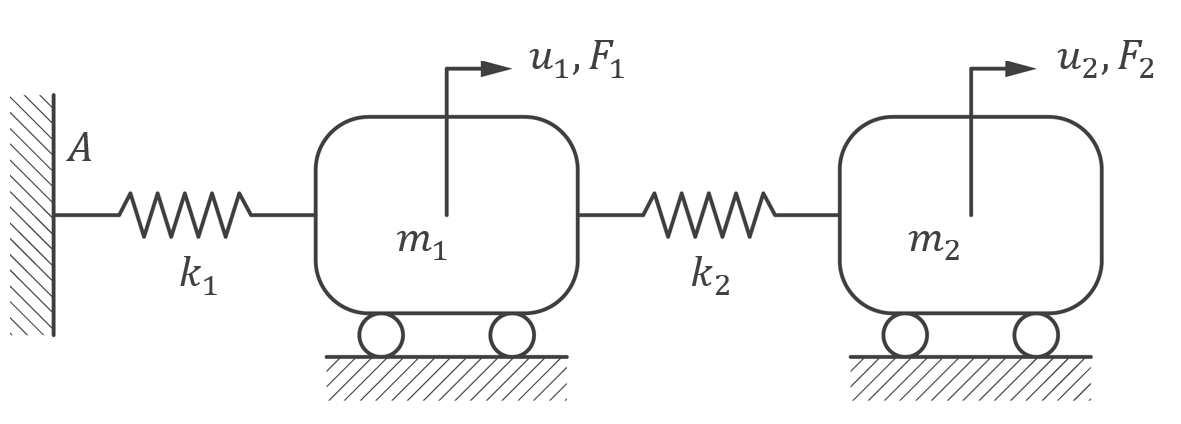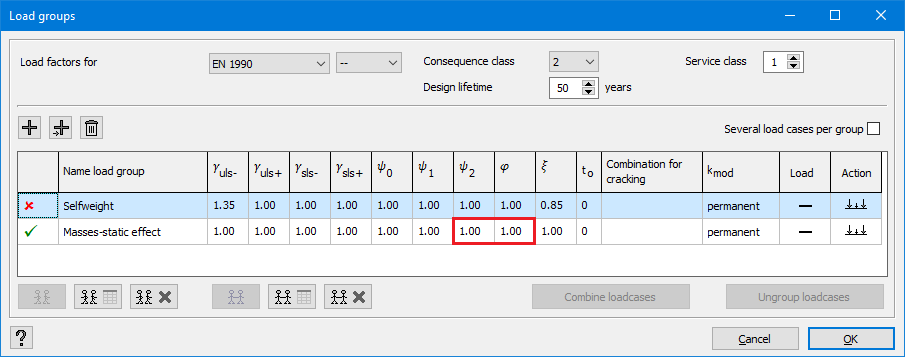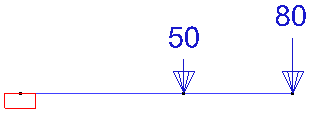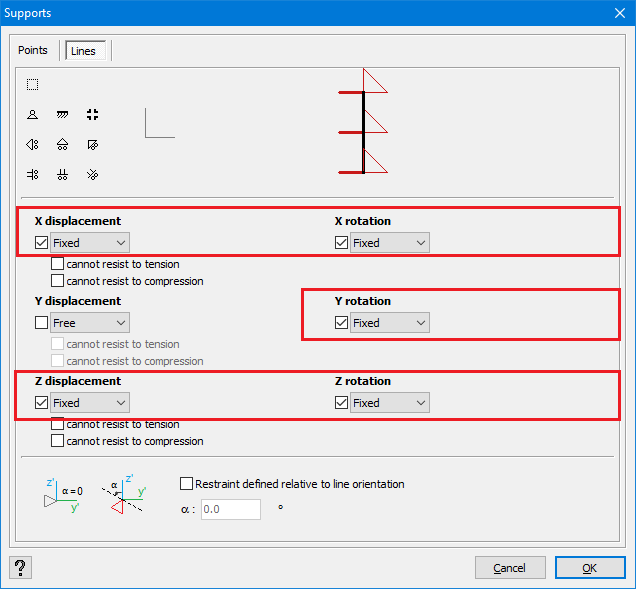Description

| Geometry | Mass | |
|---|---|---|
| Spring contant | ||
| Mesh | No. of divisions | 1 |
Results
Eigenfrequenties
| Eigen mode | Independent reference | Diamonds | Difference |
|---|---|---|---|
| 1 | 0.778Hz | 0.778Hz | 0,00% |
| 2 | 2.520Hz | 2.520Hz | 0.00% |
Eigenmodes
| Eigen mode | Independent reference | Diamonds | Difference1 |
|---|---|---|---|
| 1 | u1=0,0671 u2=0,0984 |
u1=67,03 u2=98,38 |
0,00% |
| 2 | u1=0,124 u2=-0,053 |
u1=124,44 u2=-53,00 |
0.00% |
1. Eigenmodes are determined except for a proportionality factor. In Diamonds, the eigen modes are scaled using the units for displacement. In this example, the unit were set to mm. As the result, the eigen modes in Diamonds are scale so that, ![]() , while the reference used a scaling so that
, while the reference used a scaling so that ![]() . If you’d ask the deformations in m instead of mm, you’d see that Diamonds can also use the scale
. If you’d ask the deformations in m instead of mm, you’d see that Diamonds can also use the scale ![]() ..↩
..↩
References
- Hofman, G. E. (2012). Eindige Elementen Methode: Deel 2. MERc, p118
- Tested in Diamonds 2023r01.





